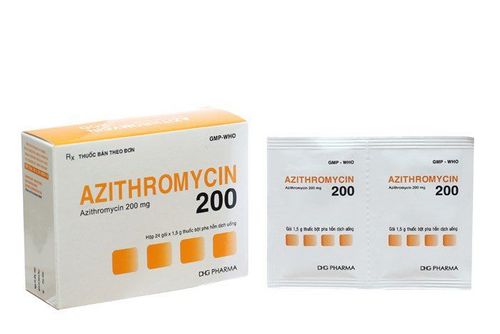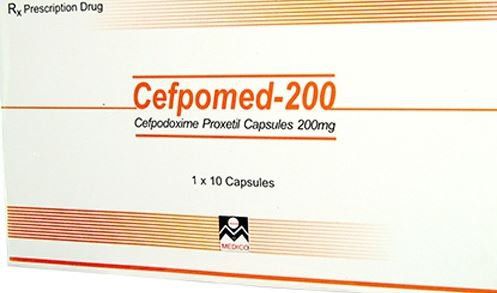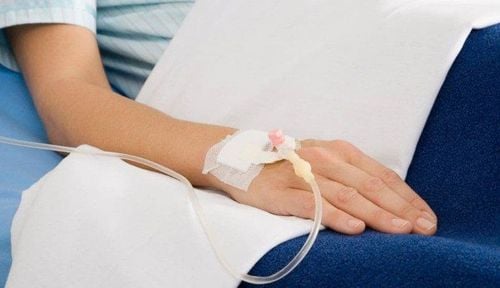This is an automatically translated article.
Trexon has the main ingredient Ceftriaxone, which is an antibiotic belonging to the Cephalosporin group. Trexon drug is commonly used in the treatment of respiratory tract infections, urinary tract infections, intra-abdominal infections and meningitis,... Information about uses, doses and side effects of Trexon drugs will be in the next post.1. What is Trexon?
Trexon is made in the form of a powder for injection, with the main ingredients including:
Active ingredients: Ceftriaxone (in the form of Ceftriaxone sodium) content of 1g. Excipients: Just enough for 1 vial. Ceftriaxone belongs to the group of 3rd generation cephalosporins, is a semi-synthetic antibiotic - Lactam with a broad spectrum of action. The bactericidal activity of Ceftriaxone is due to its ability to inhibit bacterial cell wall synthesis. Bacteria without a protective cell wall will quickly be destroyed by macrophages or neutrophils in the body. Similar to antibiotics of the Beta - Lactam group, Ceftriaxone is active against both Gram-negative and Gram-positive bacteria, especially stable against most beta-lactamase-producing bacteria (Penicillinase and Cephalosporinase).
The antibacterial spectrum of Ceftriaxone includes:
Gram-negative aerobic: Escherichia coli, Acinetobacter calcoaceticus, Enterobacter aerogenes, Enero eifocas, Haemophilus influenzae, Klebsiella pneumoniae, Morganella morganii, Neisseria meningitidis, Neisseria gonorrhoeae, Proteus mirabilis. Gram-positive aerobic: Streptococcus pneumoniae, Streptococcus pyogenes, Streptococcus viridans Staphylococcus aureus, Staphylococcus epidermidis. Anaerobic: Clostridium, Bacteroides fragilis, Peptostreptococcus Gram-negative aerobic: Salmonella, Shigella, Citrobacter diversus, Citrobacter ƒeundii, Providencia species Gram-positive aerobic: Streptococcus agalactiae.
2. What effects does Trexon have?
Trexon is indicated for the treatment of:
Respiratory tract infections; Bronchitis , severe pneumonia; Acute otitis media, ear, nose and throat infection; Urinary infection; Sepsis ; Meningitis , brain abscess; Abdominal infections; Bone infections; Severe infections; Prophylaxis of preoperative infections; Neurological and cardiac symptoms; Arthritis of Lyme disease.
3. Contraindications of Trexon:
Contraindications of Trexon in the following cases:
People with a history of allergy to antibiotics of the Cephalosporin group, Beta Lactam or anaphylaxis due to Penicillin. Intramuscular injection of Trexon is contraindicated in children under 30 months of age or those sensitive to Lidocaine.
4. Dosage and how to use Trexon
4.1. Dosage Adults:
Dosage and frequency of use of the drug depends on the degree of infection, the sensitivity of the causative organism and the patient's condition.
Usual dose: 1-2g / day, divided into 2 injections or 1 injection depending on the severity and type of infection. Maximum dose 4g/day. In case of uncomplicated gonorrhea: 250mg/day intramuscular injection; In case of infectious gonorrhea: Intramuscular or intravenous injection 1g/day. Prophylaxis of infection before surgery: 1g intravenously as a single dose 30 minutes to 2 hours before surgery. Pelvic inflammatory disease: Intramuscular or intravenous single dose of 250mg Ceftriaxone daily. Lyme disease treatment failure with Penicillin G: 2g/day injection for 14-28 days. Children:
Usual dose: 50 - 75mg/kg, divided into 2 times or injected once. Maximum dose: 2g/day Meningitis treatment: Initial dose: 100mg/kg, not more than 4g. Maintenance dose: 100mg/kg/day, injected once a day. Usually, the average duration of treatment is 7-14 days. In case of infection caused by Streptococcus pyogenes, treatment should be continued for at least 10 days.
Newborns: Use a dose of 50 mg/kg/day.
Acute otitis media: Intravenous dose 50mg/kg, not more than 1g Other subjects:
People with combined renal and hepatic impairment: Adjust dose based on creatinine clearance. Creatinine clearance less than 10ml/min: The maximum dose should not exceed 2g/24 hours. Patients on hemodialysis: Intramuscularly or intravenously, a dose of 2g is given at the end of dialysis to maintain effective drug concentrations until the following dialysis period. normal: No dose adjustment necessary 4.2. How to use Trexon can be used by intramuscular or intravenous injection. In case of intramuscular injection, the drug is mixed in 1% Lidocaine solution and injected into the gluteal muscle to relieve pain for the patient. In case of intravenous injection, the drug is mixed in distilled water and injected directly within 2-4 minutes. The use of Trexon is only done in medical facilities and must be under the supervision and manipulation of medical staff. After injection, the patient needs to lie in place for 30 minutes to monitor and promptly detect post-injection reactions.
5. Notes when using Trexon
5.1 Side effects when using Trexon During treatment with Trexon, patients may experience undesirable effects such as:
Common: Diarrhea, skin reactions, itching and rash. Uncommon: Agranulocytosis, neutropenia, fever, eosinophilia, phlebitis, edema and urticaria. Rare: Headache, dizziness, anaphylaxis, interstitial nephritis, pseudomembranous colitis, hematuria, transient elevation of serum creatinine and liver enzymes. When detecting side effects after being injected with Trexon, the patient or family member must notify the medical staff for immediate treatment.
5.2 Notes when using Trexon Before appointing Trexon for treatment, it is necessary to carefully investigate the patient's history of drug allergies, especially those who have ever been allergic to beta-lactam antibiotics. , Cephalosporin or Penicillin. Using Trexon with Gentamicin, Colistin, Probenecid and Furosemide increases the possibility of nephrotoxicity. In case of prolonged diarrhea during or after taking Trexon, antibiotic-associated pseudomembranous colitis should be considered. Metronidazole can be used to treat this condition. When treated with beta-lactam antibiotics, bleeding may occur, especially in patients with renal failure. If this occurs, consider stopping the drug. Pregnancy: There are insufficient studies to show that Trexon is safe for use in pregnant women, although animal studies have shown no harm to the fetus. Therefore, only use Trexone for this subject when absolutely necessary. Lactation: Studies and clinical trials have shown that Ceftriaxone is excreted in human milk but in very small amounts. However, caution should be exercised when administering Trexon to a nursing woman. Above is the basic information and important notes when using Trexon. Trexon is a prescription drug and should only be used in a medical facility with a doctor's prescription. If the patient has any questions or has other symptoms during the use of Trexon, they must immediately notify the treating doctor for timely treatment.













